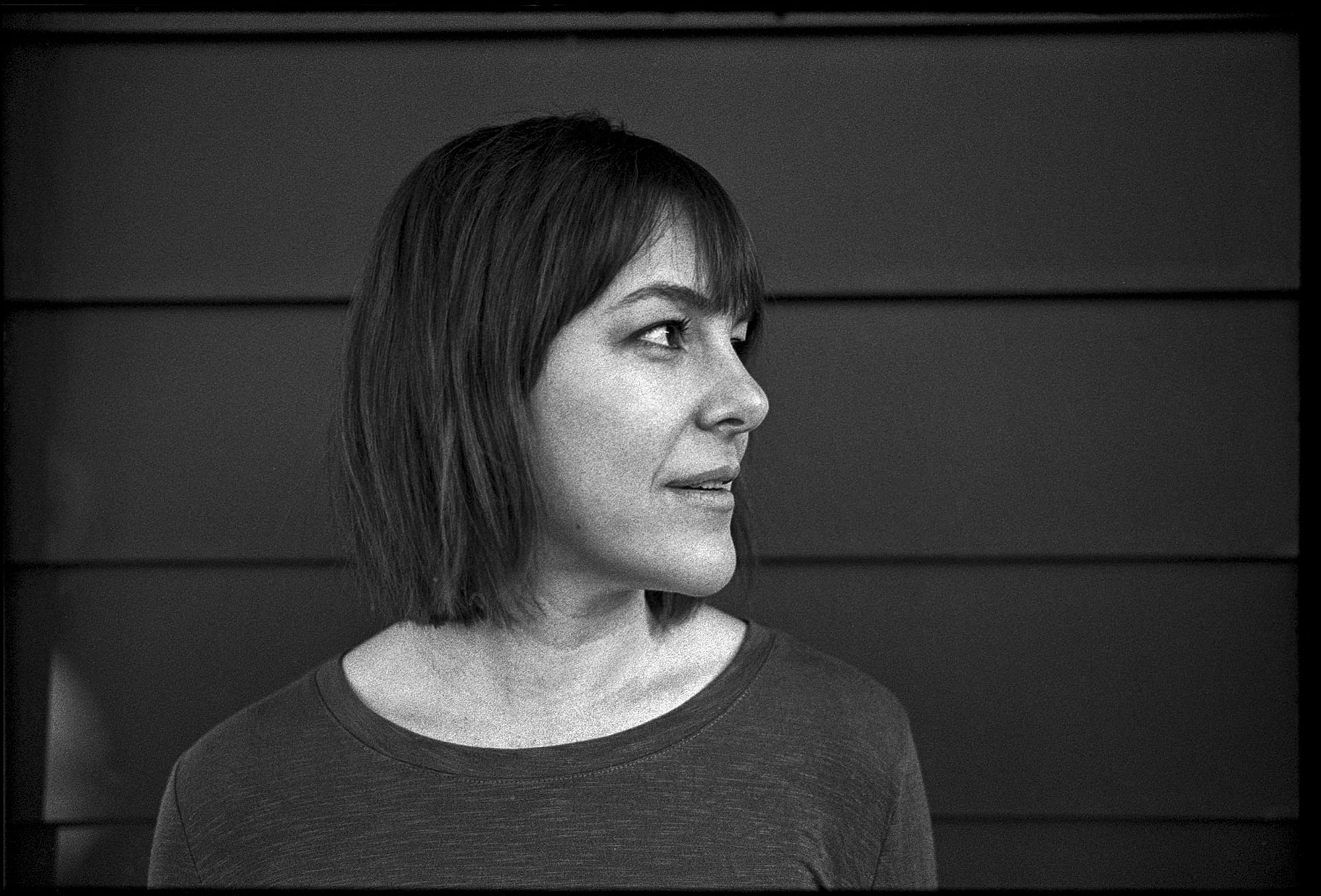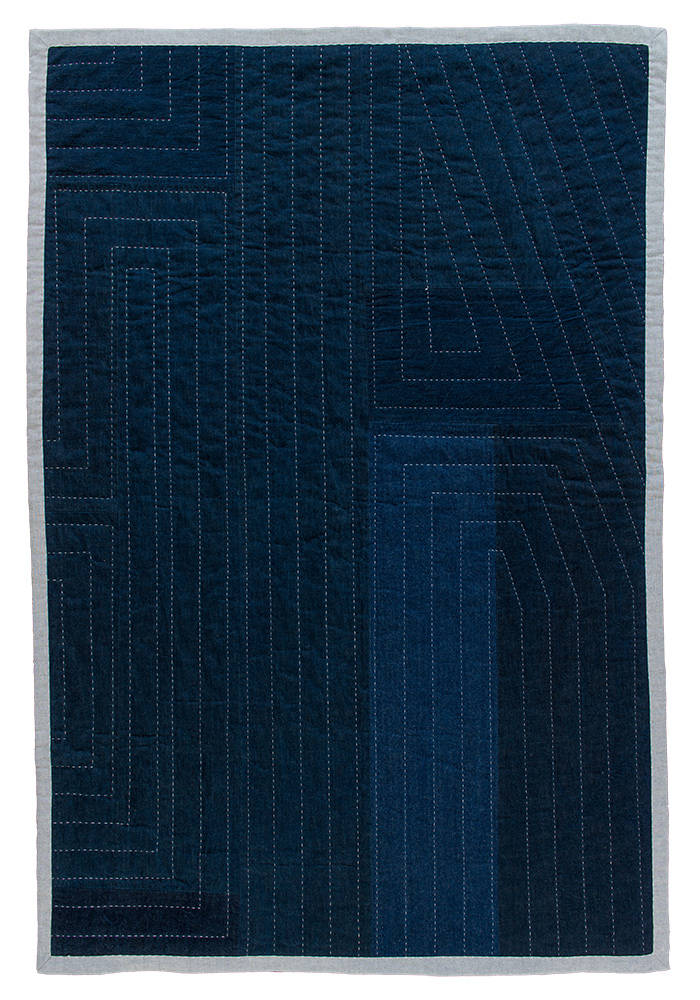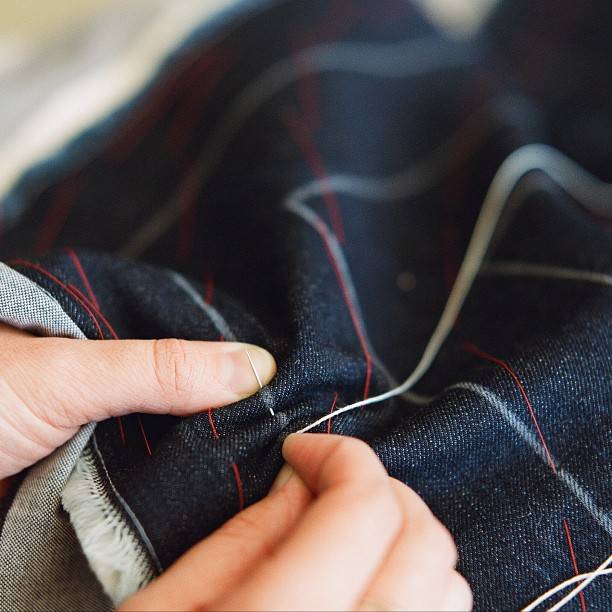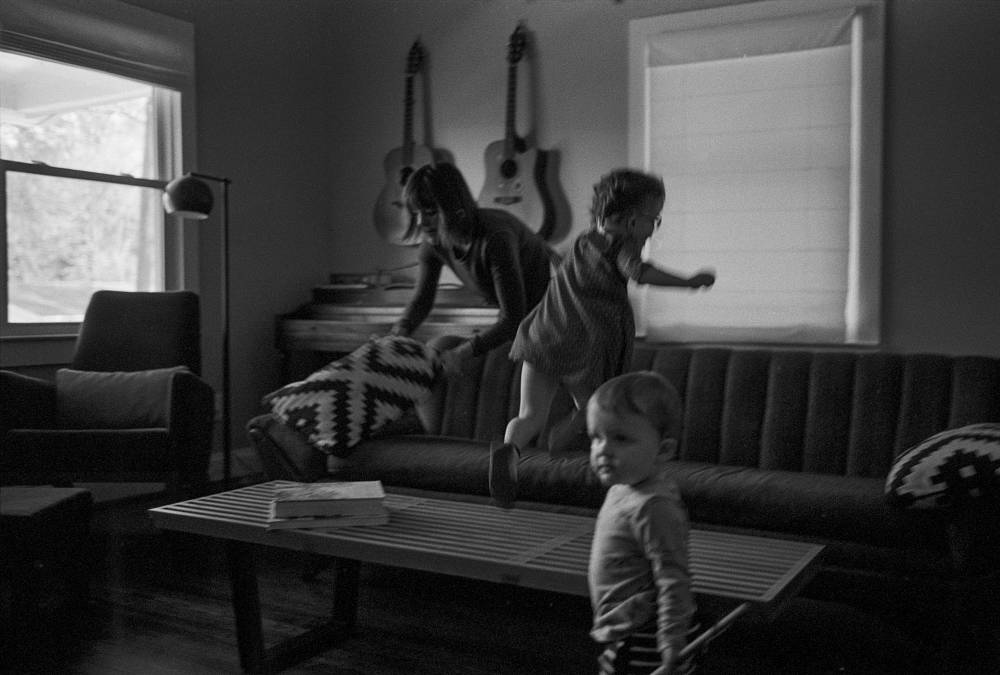Where do you live? We are in Greenville, South Carolina, but I am from Dallas, Texas. I don’t know if you know any Texans, but we are all very proud of being from Texas.
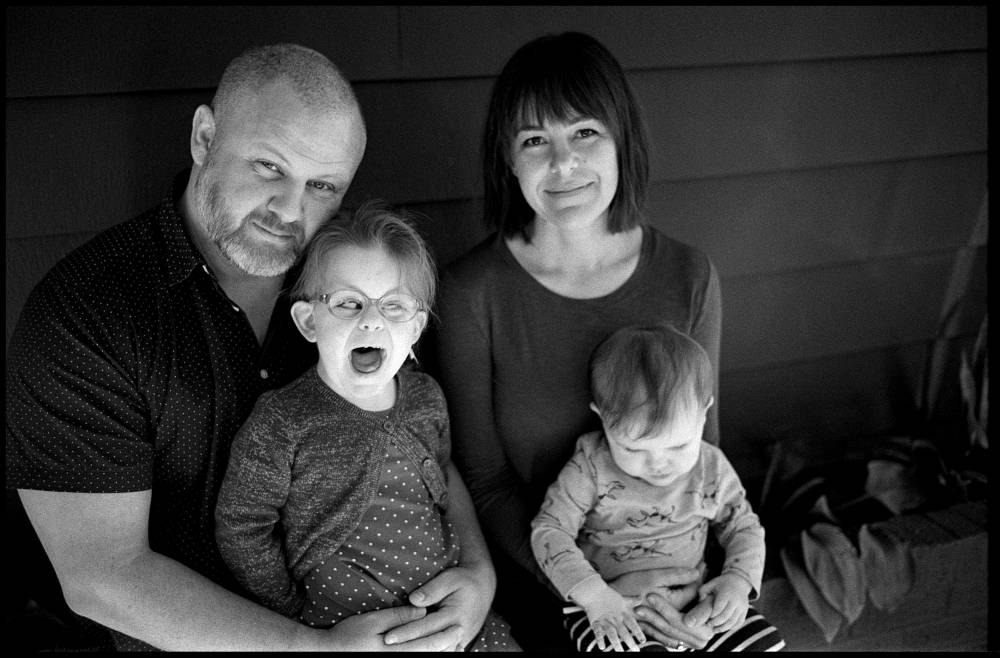
My husband lived in Houston for the first eight years of his life, and it’s still very much a part of who he is. I don’t like Houston at all, though I will say it’s got some things going for it that as an adult I think I should go visit there. It doesn’t sound totally terrible anymore. When I was a kid, Dallasites and Houstonians didn’t mix.
I understand. And then Austin is a whole ‘nother world, right? Austin is magical. It’s a great place. But my family and my parents are from San Antonio, which is truly the best I think, if you’re going to pick.
And you’re are a quilter? Yeah. I broadened that up a little while ago, though textile art is mostly what I do. I started to experiment with some other sculptural things, and then after I made this giant Japanese sashiko style quilt. So that’s all of what I do, quilting wise. When my daughter was a baby I decided to make a sashiko tree. It was this four-foot tall expansive thing for a neighborhood jewelry store up the road. I am so glad I did it, but after I did it I was like, “Nope. Never doing that again.” It was so drawn out. It was actually one of the early things I did when Etta was a baby, and looking back, I can’t believe I did that when she was an infant.
That’s fun to look back and say, I thought I was doing nothing, but actually I was getting a lot done. So when did you start sewing? When I was a little girl. The first thing that I remember making were some doll clothes for this little stuffed Hawaiian doll that I had when I was about six. My mom had an old Singer sewing machine with a foot pedal, the rocking back and forth kind. I got really interested in making doll clothes, and then I started quilting—or what I thought was quilting. It was mostly pillow making. And I used to make things for my dog. So really just when I was a little girl up until I was about 12 or so. Then I took a long break and did a lot of other kinds of art and came back into sewing when I was in my early thirties. Again, that was making quilts for a friend’s baby, because somebody got pregnant and I thought, this is something I can do. I don’t have money, but I have skills.
What kind of art were you doing in the meantime? I’m actually trained as a photographer. I went to a really great K-12 private school, and we had incredible art teachers. I was exposed to everything from ceramics and pottery to experimental Dada wood sculpture. Then I got into photography when I was 16, and I was in the lab doing black and white gelatin silver prints all through high school. Then in college I minored in photography. My major was English, because at some point I decided, “I don’t want to be a starving artist, I’ll be an academic.”
When I graduated university I worked for a nonprofit doing copywriting while assisting the president of the organization, and then weaseled my way into doing photography for them. I worked for a very short time as a wedding photographer, which I hated. So I kind of burned out on photography. Then Joshua and I got married in 2007, and I told him I wanted to be an artist. And he said, “That’s great. I’m 100 percent in favor of that. Just don’t suck at it!” And I was like, “Done. I can make that happen.” I started experimenting again, trying to figure out what medium makes sense to me, and I came back around to sewing.
So did you start sewing before you decided to start a family? Kind of, yes. We knew from the beginning that we wanted to have kids. We thought, all right, let’s wait a couple years. So we waited two years after getting married and thought, let’s wait another year. We waited three years, and decided we would do whatever we could try to do to have a family, and then we actually struggled with infertility for four years. The whole time I’m seeing doctors, making sure there’s nothing wrong with me, making sure there’s nothing wrong with Joshua, and all the time I’m making things because I don’t know how else to live. Creativity and the artist’s life to me is totally integrated. I don’t know any other way to to live, because it’s the way that I think. I believe that if you have this in you, it’s just going to come out in all different ways.
There was a short period of time in 2013 when we had a shop. We live in this neighborhood called Brandon in the village of West Greenville, and it’s an old textile mill village. So there’s a cute little main drag where there are coffee shops and restaurants and artist studios. We had a shop there for a year, and that’s when I rediscovered quilting. I was sharing a space with a guy who made jeans, and he was giving me all of his scraps. That’s how I got back into quilting, just reusing old scraps. Things really took off from there. There were a million different waves of this resurgence of handmade goods. You know, Renegade Craft Fair, Indie Craft Parade, all that stuff had been going on for awhile, but it just seemed totally ludacris to me that people would be excited about me quilting. This is the most slow-going, unglamorous thing you can do, but here I am, sticking a needle in and out of fabric, by hand. People were really excited about it, so we had a lot of traction with those things.
How many kids do you have? We have two.
But you had a long time of trying and infertility before that. I don’t have any experience with that. Can you talk a little bit about what that was like for you, and when you finally were able to get pregnant, what were your expectations? My mom’s the youngest of nine kids. My dad is the oldest of five kids. My sister has three now. Infertility is not something I had heard anyone talk about. Not being able to start a family was not on my radar at all. I am a Christian, and have a really strong faith, so that was something that really helped guide me through a lot of our journey with infertility. Even calling it infertility felt like a failure in some respects, but it became a part of our story. I am a textile artist but another part of what I do is writing. I ended up writing for our church on their blog about this journey, and it became incredibly important as a personal therapy. I also realized that there is a community of women for whom it was taboo to talk about infertility and that struggle, and that there is guilt or shame that can go along with that. It was actually really sweet because there was a group of women that ended up walking through that together, and we ended up being a support for one another.
It’s like your hopes get built up every month. If I was a day late, or a couple of days late, my hopes would get so built up, and then I would start my period and it was like I just got hit by a truck. It was just this emotional roller coaster, all the while feeling an incredibly deep, totally illogical conviction that we were going to have children. And I do not feel comfortable doing infertility drugs. Other people can do that, and that’s great, truly no judgement. I just didn’t want to do it for me. I had responded so badly to birth control when we were first married that I just thought, I can’t have synthetic hormones in my body. It will drive me crazy.
And so it was a roller coaster of “We’re pregnant! We’re not. We’re pregnant! We’re not,” for 48 months. And that’s how you end up looking at it. Every single month is a new opportunity. At some point I finally ended up really tracking my cycle. There’s a fantastic book out there called Taking Charge of Your Fertility by Toni Weschler. It’s really great for women who are trying to get pregnant, or if you’re trying to prevent pregnancy naturally, or for women who are about to start menopause. It really has the whole spectrum of seasons for women. That really taught me a ton about how to pay attention to my own cycle, and what was going on. And I learned that a key inhibitor of getting pregnant is stress. That was the season where we had our shop, and I was super stressed. We were involved with our business association, and all these different things were going on, so I finally stepped back from a lot of those responsibilities. We went to Palm Springs for our seventh anniversary, and came back and found out we were pregnant. It was like a miracle. It felt like, “Ah. We’re finally here!” And then my pregnancy with Etta ended up being really high risk.
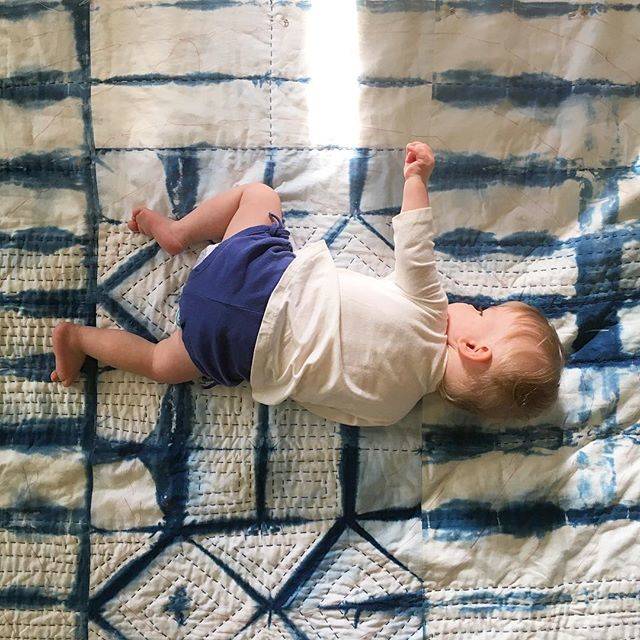
High risk, how? I had some bleeding early on in my pregnancy, about six weeks in. I went to my midwives to make sure everything is okay, and they do a sonogram and see that the baby’s got a really strong heartbeat. The midwife looked at me, and said that is a great sign to have a strong heartbeat like that. Something would have to go severely wrong for this pregnancy to end in miscarriage. I was like, awesome, great. Keep going. Nine weeks in, I have more bleeding, and this felt like a period. It was really scary. I went back to the doctor. This time to maternal fetal medicine. They did a more in-depth sonogram. They see the baby. See everything, seemingly as it should be, but they recommended to go ahead a do a genetic test.
Up until that point I had decided I wouldn’t do one. I knew we were supposed to have kids, and there’s nothing that a genetic test is going to show me that is going to change my mind. I am going to follow this pregnancy as far as I possibly can until something happens. But at that point I’ve had all of this bleeding, and I thought more information is better, so why not. So we had the genetic test around 12 weeks, and we get the information and it shows that this baby is a girl, and that she most likely has something called Turner’s Syndrome. It’s a genetic anomaly. Every person gets 23 chromosomes from each parent, and that 23rd pair of chromosomes determines your sex. XX is a girl. XY is a boy. Etta, my daughter, only has one X. Ninety-nine percent of girls with Turner’s Syndrome—and they’re always girls—are miscarried or stillborn. So I’m given all of this information that this probably isn’t going to go well, and asked what I want to do.
I could have an amniocentesis, or a CVS test, which would confirm 100 percent that this is what’s going on. But again, we’ve just walked through 48 months of infertility. This is my first pregnancy, and I just said, “Nope, I’m not having any other tests done.” I don’t want to do anything to jeopardize this pregnancy, because there’s a risk of miscarriage if you go for more in-depth tests. They said that’s fine, but that I would now have to come in for regular sonograms, because they want to make sure her heart is developing normally and that her kidney function is where it’s supposed to be.
Is the bleeding related to Turner Syndrome? I think so. You can have implantation bleeding which is actually normal, but that wouldn’t have happened at that six-week mark. That would have happened much sooner. So it’s a sign that there’s something else going on. But some women have spotting and bleeding during pregnancy, so it’s not necessarily a sign that there’s something catastrophic going on.
“I did not grow up with anyone around me who had special needs. So I had no clue how to proceed.”
So through all of that, that must have knocked you back a little bit after all of that trying. To know now that there’s potentially something wrong. How did you prepare yourself for not only the labor and delivery and being a new mom, but also a new mom to a child with possible special needs? I did not grow up with anyone around me who had special needs. So I had no clue how to proceed. We had different meetings with the geneticist to talk us through some stuff, but really I just was clueless and kind of terrified. My faith was incredibly important for helping me navigate all of these questions and concerns, and feelings of guilt.
And so again, my faith comes to step in and that was incredibly important for helping me navigate all of these questions and concerns and feelings of guilt, and when I come up against something like a medical diagnosis, specifically, I just do a deep dive into research mode. Because for me, information helps dispel fear. It wasn’t easy. I definitely saw some stories that made Turner Syndrome feel like the scariest thing that could happen. But at the same time believing that the Lord was telling me,”She’s going to be okay. You’re going to be okay.” But I did want to familiarize myself with what could happen.
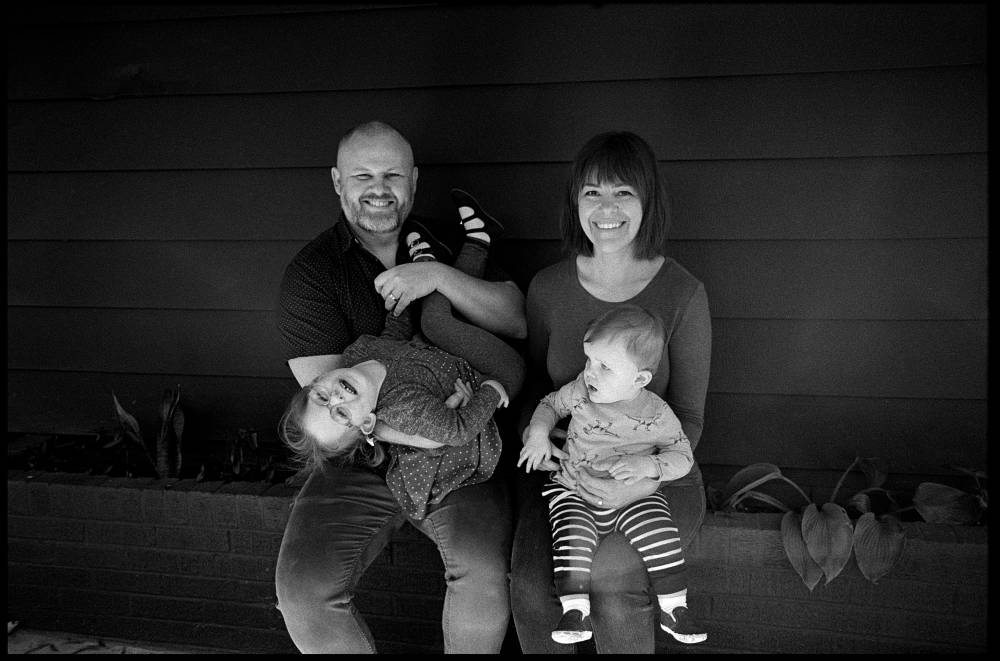
I ended up delivering at 34 weeks due to preeclampsia. Previous to that, we took Bradley birthing classes. At that point my sister had delivered two children unmedicated. One in the hospital, one in a birthing center. Here in Greenville, the midwives that I work with also partner with the hospital, so I could choose to give birth in their birthing center or at the hospital. We had two different birthing classes going on: one with the midwives called “centering,” a group class, and then our Bradley classes, originally husband-coached childbirth all about different positions and exercising, and all the sort of “granola,” earthy stuff that you would hope for. Ina May Gaskin is a patron saint of all this stuff. I’m grateful that I took those classes.
In the Bradley class, our teacher was so amazing. In one of the last exercises we did with her we had these cards. On one side of the card it would say “unmedicated birth.” On the other side it showed “epidural.” On one side it said “vaginal delivery.” On the other side it said “C-section.” So you had all these cards face up for what you wanted, your birth plan, what you were hoping for. And then she says, “Okay, you’ve lost control of one option. Flip it over to the other side. What’s the one that you could handle the most, not being able to choose. Okay, turn over three more. Okay, turn over three more.” And that was such an incredible exercise because it was a little prequel of “You don’t get to choose everything that you want. That’s not how life works, in case you hadn’t figured it out.”
That exercise is one of the things we still come back to. Thank you, God, that happened. It really showed me and Joshua what we did care the most about in this birth experience. For me, it was a vaginal delivery. And it was no narcotics. No episiotomy, and I forgot what the other one was. We ended up with four things as our best case scenario when we’ve lost control of everything else.
The night before she was born, I ended up going to the hospital because my blood pressure was a little bit high. They checked it three or four times, and the midwife told me, “You need to come back in the morning. Want to check your blood pressure again.” I had no idea what that meant. Friday morning, we go back to the midwife and she says, “Honey, okay, um, your blood pressure is still really high. You need to go across the street and go to the hospital.” And I was like, “What? What are you talking about? There’s this little coffee shop we’ve been waiting for to open. Can we go to that first?” And she says, “No, you need to go the hospital right now. I think you have preeclampsia.”
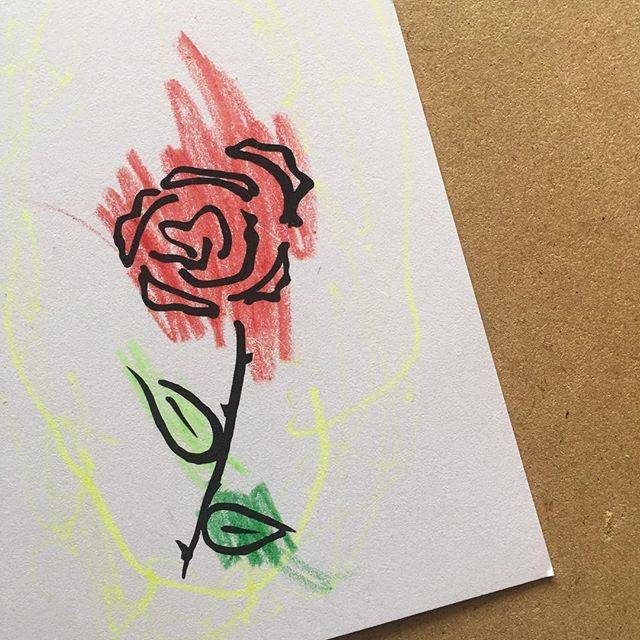
I had never heard that word, except for Downton Abbey, the television show. Because Sybil died from preeclampsia. The only time I’ve ever heard that word. So we drive across the street to the hospital. They do a ton of tests and end up telling me, “You’re going to deliver in the next 24-48 hours.” And I was like, “What?” I was 34 weeks pregnant. Zero dilated. Nothing. And I’m thinking, I want this little baby, my Etta, my baby girl to have as much time in the womb as possible. She needs all the chance she can have to grow. I’d been told the previous week at one of our maternal fetal medicine appointments that she wasn’t growing like they would have liked to see, so if she didn’t gain some weight in the next few days, they were going to have to induce just to make sure she can get fed outside the womb. So I was already on heightened alert: “Let her stay. Let her be in there.”
Preeclampsia came on and took all of those choices out the window, but I still was trying to have an unmedicated vaginal birth, clueless to the fact that preeclampsia means you’re done with that. I didn’t choose to have the epidural until more than 24 hours in. And I even didn’t choose to have the chemical induction. I was trying to let them do a physical induction, which was really painful. Finally I was on the pitocin, on everything. And then when they did the epidural, man. That was just…thank God. I’m glad I chose that in the end.
“She was so tiny she came out between pushes. Etta was three pounds, ten ounces, and I only got to hold her for five minutes before they whisked her away to the NICU.”
She was so tiny she came out between pushes. Etta was three pounds, ten ounces, and I only got to hold her for five minutes before they whisked her away to the NICU. That was something that I was deeply sad about for over a year. But we did end up bonding. I was able to breastfeed her normally. She was too little to breastfeed in the beginning, so it was like practice in the NICU, but mostly it was me and the pump. That was my introduction to breastfeeding.
I absolutely went through postpartum depression and really posttraumatic stress. It’s not the first traumatic medical experience I had had. I was hit by a car when I was 15, and in a coma for five days. That’s a whole other story. But it took a long time to realize what was going on, emotionally for me after Etta was born. She spent her first month in the NICU with us travelling back and forth and me pumping every two hours. It was an incredibly hard road. Looking back, I don’t have it as difficult as many mothers do who have a premie. And at the same time, I was still trying to figure out what Turner Syndrome is, what it would mean for her.
With all of those sonograms I had, they were wanting to check her heart to make sure that it was developing normally, and she gets out of the womb and is in the NICU and they finally do the echocardiogram and her heart is perfect. It’s totally great. Most girls with Turner’s have an open heart surgery really soon. And they were really concerned about her kidney function, and her kidneys are great.
Etta sees more doctors than any kid I know. She has an endocrinologist. She has a cardiologist. She has an orthopedist. She has an opthamologist. All of these different things going on, but by and large, she is an incredibly healthy little girl. Her cardiologist was like, “There’s not a lot of research out there about girls with Turner Syndrome who have normal hearts, but Etta does, so she can play rugby if she wants to.” And we were like, “What!?” We still have to go every two years to have hear heart checked. She will for the rest of her life.
Amazing. And you just had to step up to the plate. That’s what we have to do, right? That really is motherhood. Whether or not the dad’s in the picture, or a partner is in the picture, you as the mother are the best advocate for your child. Nobody is going to care as much as you do. And so you do. You’ve got to step up, and it’s probably terrifying, but it’s probably a host of circumstances you never thought you would have to deal with.
So through all of that and the first year being so difficult, was your work a comfort for you, or was it out of the picture? I think it was both. Looking back and thinking about that sashiko tree that I made for the jewelry store, I think that was a bold move because I went to them. They did not approach me. I thought, they’re in this neighborhood with a bunch of artists. Let’s collaborate. I’m an artist. I’m in the neighborhood, so let me do this thing for you. And they said sure. And then I proceeded to work for the next five months on it because it took way longer, because hey, I’m a mom. I have a little girl.
Being a working mother is hard on it’s own. That is so hard. Being a stay at home working mom is sometimes a joke. Because the work you’re doing is your children. It seems like, wow, my office is just in the next room, but it’s hard to work when they’re screaming and it’s lunch time, or nap time. It was me and the pump for three months, and then when we finally figured out how to breastfeed normally, that’s all I did. Because I hate the pump. I have PTSD about the pump. So I fed her every two hours until she was eight months old, and she took a long time to nurse. Those were 45 minute breastfeeding sessions, so I had 30-45 minutes to figure out if I wanted to shower or eat before it was time to feed her again.
So yeah, work was certainly nonexistent for a lot of that time. Joshua had a commuting job at that time, so I didn’t have him to lean on to watch her when I needed to really get stuff done, except at night. But then at some point I realized I’ve committed to this thing. I want to do it. I’m going to do it, and I’ve got to make time for it. And so there were moments of “Wow, this is who I am, and I love this.” And then there were other times of “What the hell have I gotten myself into. This is such a bad idea.” But we made it work.

What kinds of things did you have to put in place to make sure that you could do your work? Having a room for my sewing machine or my sculpture, whatever I was working on at the time. Just a physical space, and honestly I was in the living room a lot. I feel like motherhood is just juggling so much. If you’re not juggling work and other things, you’re juggling laundry and all of these things, even if your husband is really involved, and I would say Joshua is super involved. You’re just finding the holes for when you can fit something in. Having a space for the sewing machine, but sashiko is a very low barrier of entry art form, because you need fabric, a needle, and thread. So you can take that with you places unless you’re working on that sculpture I was doing.
How was your second pregnancy different? Total dream. Total surprise dream. We call Moses a dream baby because he’s just a delight. He was conceived the same month I weaned Etta. So I nursed her. I ended up nursing her for 21 months, and then thought, whoa, I’m myself again! This is great. My boobs are my own! And then we got pregnant and I was in counseling at that point. I finally figured out something is going on emotionally that I need to deal with, because I can’t keep yelling at my husband and my daughter or myself. So I was in counseling and that was one of my last sessions with my therapist. I told her I might be pregnant, but I don’t know yet. And she asked how I felt about that. And I said, “Scared, but better. A lot better.” That was my last counseling session, and a couple days later I found out I was pregnant.
It was just so great, but my weight gain was very different with Moses. With preeclampsia they’re thinking more and more like it’s kind of determined at conception. And I looked back at the pictures of myself when I was pregnant with Etta and I thought, whoa, I was swollen the whole way through this thing. I can look back and say, that was different. With Moses, I gained the same amount of weight, but it was all in my belly. He was just a big boy. And sure enough he was born weighing almost nine pounds, and I pushed him out unmedicated at the birthing center like I had hoped with Etta, and the whole time I was thinking, why am I doing this?
I have these ideals in my head of what is best, and my sister is just a warrior. Before I had kids I used to say if you can deliver unmedicated you are “Amazon.” So that’s what I have in my mind is this picture of Jenny, my sister, as just this Amazon warrior princess. And then with Etta I had a ton of guilt and shame around the fact that she came so early, and that she has special needs. I had to do the epidural, but then I was so grateful for the epidural. And then here I am pushing Moses out and I’m thinking, what am I doing? Why? Why have women been doing this for thousands of years? And then he was born. Honestly, it was about five hours of hard labor, so it was great in retrospect.
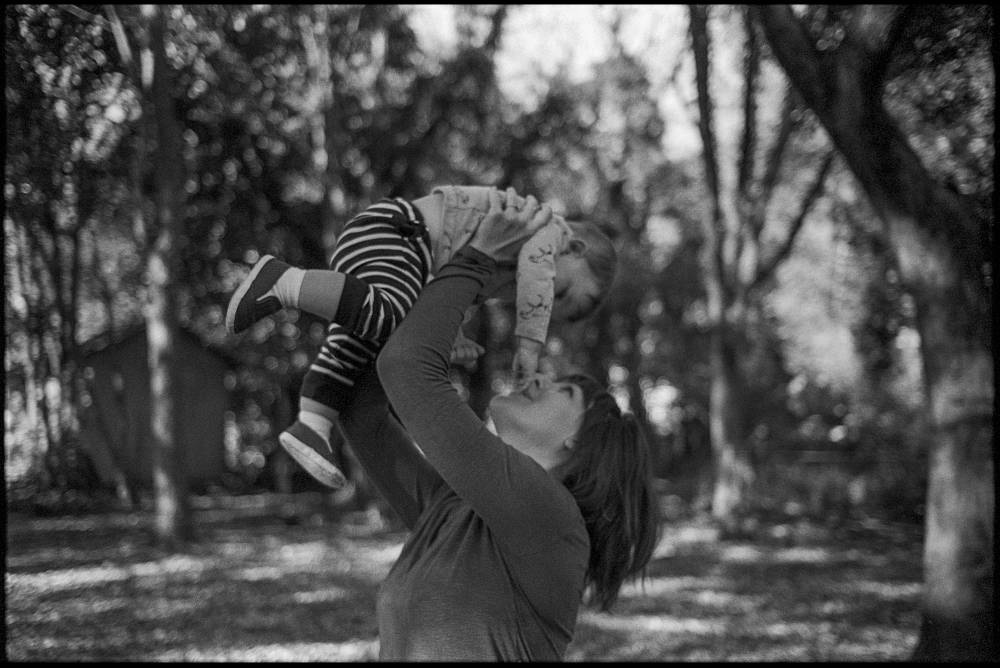
But then I wouldn’t stop bleeding. So I had to go back to the hospital. And while the midwife was driving me over there I asked her, “Am I hemorrhaging?” and she said “Um, technically, yes.” So we get to the hospital, and it ends up being just a small tear that just wouldn’t stop. But at that point I had pushed that baby out unmedicated and I wasn’t doing anything else unmedicated, so I had them put me under. I’ve had a bunch of surgeries in my past so that wasn’t new. And sure enough, they put me under and I had the longest, worst recovery. They had to put a catheter in at week three because my bladder wasn’t emptying the way it should. My brain wasn’t sending the signal to my body the way it was supposed to. Going home with a newborn and a toddler and a catheter and a urine bag hanging onto you, that’s no fun. So the newborn days of Moses were really not fun.
Then Joshua ended up getting sick with a staph infection in his bloodstream. He had all of these unexplained fevers and it was just a ridiculous year of illness. Then my mother had open heart surgery and now my dad has cancer, and Moses is eighteen months old, but somehow we’ve come through all of this. I don’t know how except by the grace of God. And I’m a much different person, and I’m a much stronger person, and I never would have wished this on myself. But at the same time I’m really super grateful.
“And all the while, art is there.”
And all the while, art is there. And it’s the way that I think. It’s the way that I process and it comes out in the textiles and the writing. But I don’t have the luxury of doing that all the time. My kids do go to a school a couple times a week, but it’s not every day, and it’s only for a few hours. If I was sending them to daycare, like a lot of working moms need to do, to me that just sounds totally luxurious. Whoa, you just have gobs of time to think and to process and be and get in the zone to make stuff! But this is a really precious time with them that I do value, even though it’s super hard. And so they’re home with me the majority of the time. I can’t always sew. I can’t always write when I need some quiet. I have to bring that creative mindset to things like cooking and laundry. I make some of my toiletries and some of my cleaners and that’s an outlet as well. We cloth diaper a lot of the time. At some point I discovered, oh I can make the wipes too. So I’m trying to bring that creativity to all of these areas because I would suffocate without that.

What do you hope for in the future with that as your kids get older? It would be very different if this was our income. I would rearrange a whole lot of things in my life, and the kids would be in a daycare or preschool situation much more consistently. I am not the sole breadwinner in the family. My work sometimes makes money. But one of the things I said early on is that I didn’t want to be a starving artist, and that’s exactly what I turned out to be, because I don’t care about money. I want it, and I need it, and I think it’s incredibly useful, but my feelings aren’t hurt if my work doesn’t sell, because I have to do this. I’m going to do it whether it makes money or not. I value saying something through an artistic medium, and it is any artistic medium that happens to be nearby.
I definitely am trained in certain things. But I will say, photography, the thing that I pursued for a decade, that’s Instagram right now. I have a really nice digital camera that I never get out, because I just don’t care. And that was a season of time and it’s okay that that was a season of time. Right now, I’m making Etta some nightgowns. I have a little bit of experience in pattern making, and I’m really incredibly opinionated about fabric. I’m appalled that the majority of what you find in stores right now is polyester, specifically with flannel nightgowns. You cannot find a flannel nightgown that is not 100 percent polyester! That is not the same thing! Flannel is cotton! So I went to the fabric store and I bought some cute flannel cotton patterns that I liked, and now I’m working on some nightgowns for my little girl. Then I’ve been working on her quilt that I started when I was pregnant with her. It’s still not done, four years later. Because I was depressed for a long time and other stuff was going on as well. So we’re in the homestretch and I’m looking at it and I’m thinking, “Just get it out. Just finish it. You’re almost done. Put it on the girl’s bed. She just got a twin bed!”
You can do it. I’m rooting for you! Thank you. It’ll be great. You can see a ton of pictures of it on Instagram in progress.
“Do not stop. This thing is not easy, but it is worth it. If you are a creative person, if you are an artist in your heart, that’s never going to stop.”
What advice would you give to anyone else who’s a Mother Maker? I would say, keep going. Do not stop. This thing is not easy, but it is worth it. If you are a creative person, if you are an artist in your heart, that’s never going to stop. That is the thing that is inside of you that needs to come out and you just have to keep moving forward. Also your kids are not going to go anywhere. They’re yours 24 hours a day, so find a way to incorporate them into your work and collaborate with them. I think that’s the joy and a delight of being a mom artist: showing them how to work, and how to value work and creativity as a role model, but then to get ideas from them. They’re interesting little people with minds, wills and emotions. They have all kinds of opinions, so mine that gold.

